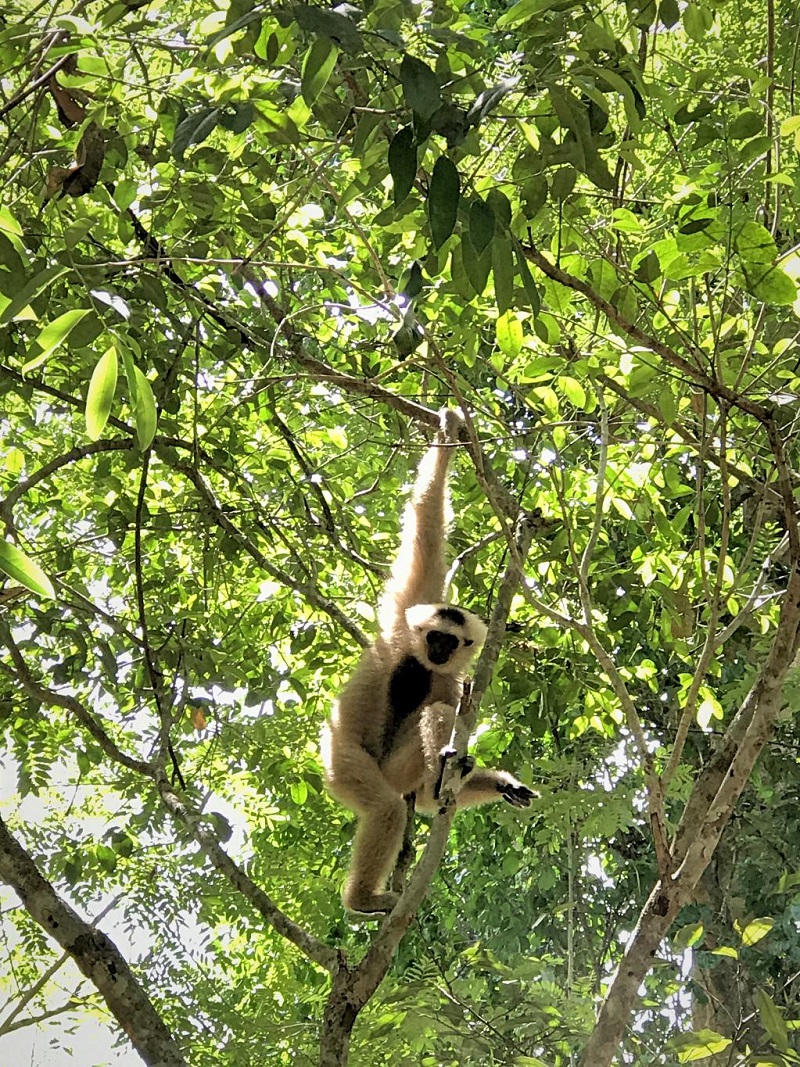
Visit the thought-to-be extinct primate, gibbon, in Cambodia
Their life span is about 35-45 years. Gibbons are social animals that are active during the day. They live in small, stable family groups consisting of a mated pair and their immature offspring (Juveniles, gibbons less than 7 years old). Gibbons are omnivores primates a kind that eats plants and meat. Gibbons are very acrobatic primates and they spend most of their lives in trees because they are so dextrous while moving in the trees, almost no predators can catch them. The other remarkable facts about gibbons are that they have a humanlike build but seem to lack higher cognitive abilities and self-awareness.
There are approximately 20 species of gibbon found in tropical forests in Southeast Asia. In Cambodia, there are Pileated Gibbon, Lar Gibbon (also known as the white-handed gibbon), Agil Gibbon (also known as the black handed gibbon) & Yellow-cheeked crested gibbon which is frequently found in North-East Cambodia forest of Ratanakiri, Kratie, and Mondulkiri.
The next day, visitors get up incredibly early at 3 am and walk about 2 hours from the research centre to the gibbon site. As soon as the sunrises, gibbons start calling, you and your ranger will have to run quickly to spot them in their natural habitat. To organize your trek exclusively, get in touch Gibbon Spotting Cambodia and partake in this amazing experience yourself.

UK Number: 0208 150 5150
Cambodia Number: (+855) 16 565 496/ 89 532 995
Email: [email protected]
Another way to get involved in gibbon preservation is by volunteering with conservation groups that are working on the gibbon project. This would be of great help. Moreover, visiting the gibbons with us means you also play a big role to help protect the fastest and most agile of the gibbons from extinction. Some parts of our profits go directly to the organization to support villagers and the gibbons.

 Trustpilot
Trustpilot
 Tripadvisor
Tripadvisor